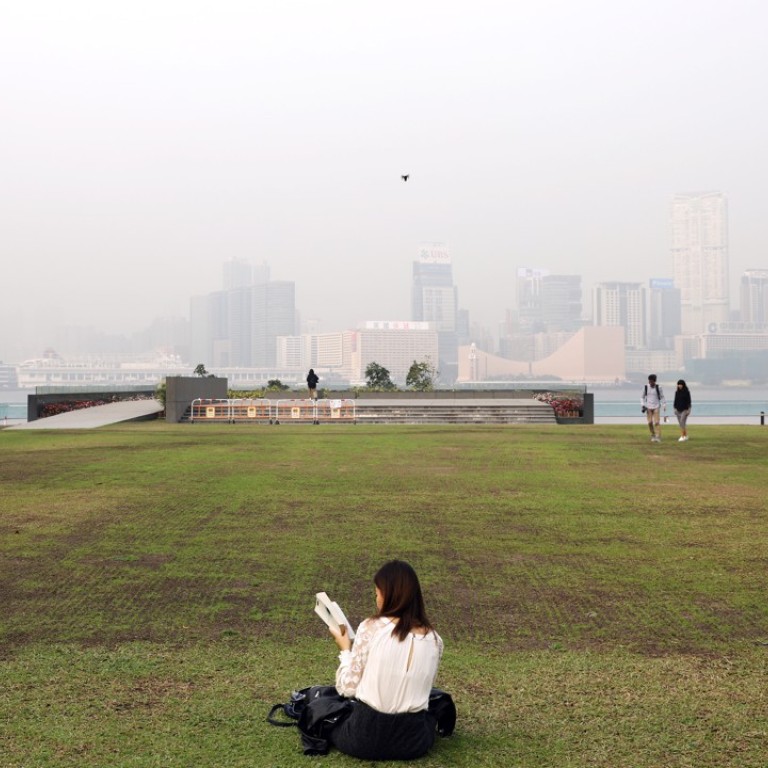
Hong Kong smog hits top of the health risk scale, thanks to haze and low winds
Government urges schools to safeguard pupils’ lungs, as pollution approaches ‘Serious’ level for second time in five days
Air pollution in Hong Kong hit some of its worst levels on Monday, posing a serious risk to residents’ health for the second time in just five days.
The Environmental Protection Department reported that smog levels at a monitoring station reached 10+ on the Air Quality Health Index, corresponding to the “Serious” health risk level.
There are 13 general stations and three roadside stations across Hong Kong. By 3pm, all roadside monitoring stations and six general stations had recorded levels in the “Very High” and “Serious” risk ranges. The general station in Tung Chung was most choked, with a reading of 10+. The general station in Tuen Mun and roadside station in Causeway Bay had readings of 10.
That was only five days after the city got its most recent warning over breathing risks. Last Wednesday saw readings in the “Very High” range before noon and stations in Tung Chung and Tsuen Wan recorded “Serious” pollution.
The index, in place since the end of 2013, ranks health risks brought by air pollutants with five grades, from “Low” to “Serious”, with a scale running from one to 10 and 10+. “Very High” pollution refers to scores of eight to 10 while “Serious” means 10+.
When the index reaches the “Very High” range, the public is advised to reduce outdoor physical exertion. When it reaches “Serious” people should minimise their time outdoors.
The Education Bureau called on schools to take appropriate measures to safeguard pupils’ health.
The environmental authority said Hong Kong was having a hazy day with light winds, and that weather had caused a build-up of air pollutants in the city and the Pearl River Delta region since Sunday.
Recent sunny periods had enhanced smog activity and the formation of ozone and fine particulates, resulting in high pollution.
In parts of urban areas and on roadsides, nitrogen dioxide was forming because of the high level of ozone, which was the main reason behind the air quality’s deterioration to “Serious”.
Northern China’s Hebei province home to six of 10 smoggiest cities, environment ministry says
The Hong Kong Observatory forecast that pollution levels would ease as an intense northeast monsoon started to affect the south China coast in the middle of the week.
General air quality monitoring stations hit “Serious” levels on an average of five days last year, up from three in 2016 and 2015, and four in 2014.
Tung Chung and Tuen Mun got the worst of it, with 12 and 13 days of “Serious” health risk respectively.


